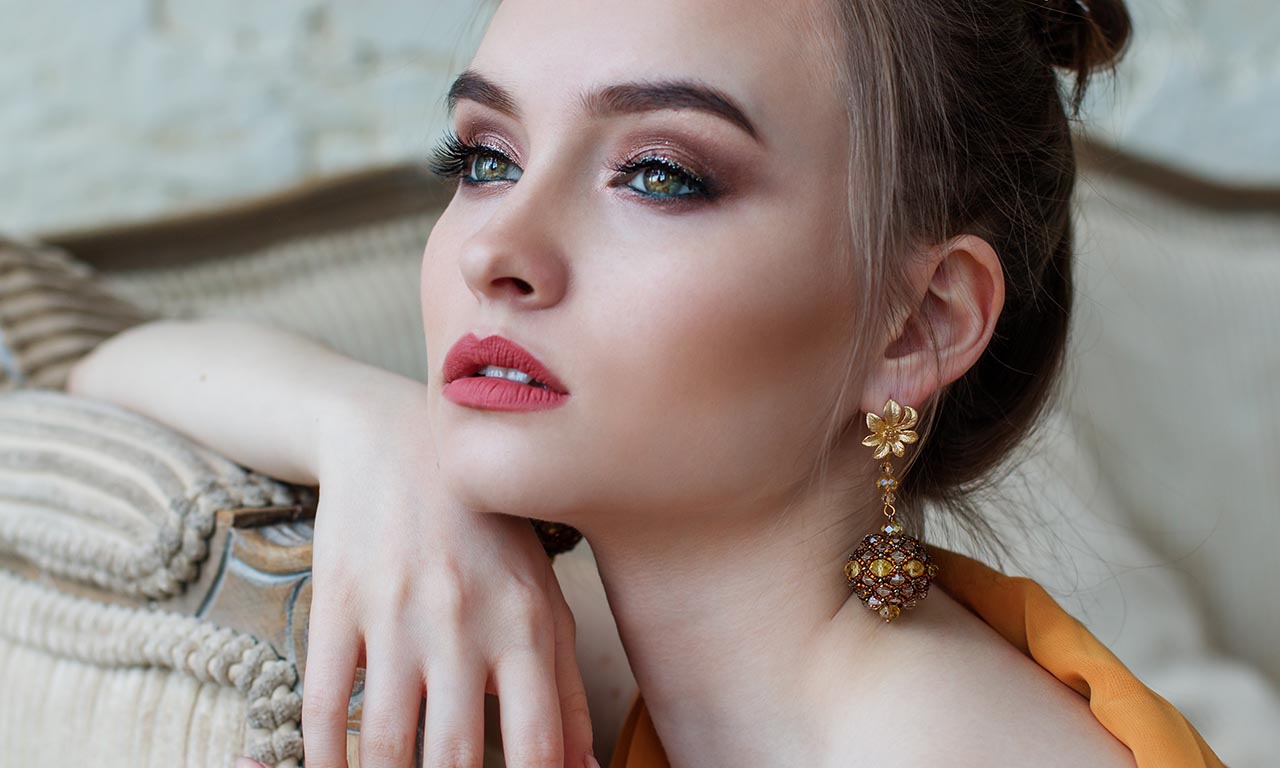Your cart is empty now.

What Trademark Class is Jewelry?
Jewelry is in Trademark Class 14. However...
Jewelry, encompassing a wide range of items such as rings, necklaces, bracelets, earrings, and watches, falls under Class 14 in the Nice Classification system. This class is specifically designated for precious metals and their alloys, as well as goods in precious metals or coated therewith.
*** Advanced trademark search tool, providing relevant matches ranked by percentage similarity.*** 9am - 9pm EST
Here is an overview of Class 14 and why it is suitable for various types of jewelry:
Class 14: Jewelry and Related Items
Class 14 Description:
- Primary Goods: Precious metals and their alloys, jewelry, precious and semi-precious stones, horological and chronometric instruments.
-
Detailed Goods:
- Jewelry, including imitation jewelry.
- Precious stones, semi-precious stones.
- Watches, clocks, chronometers, and other time-measuring instruments.
- Articles of precious metals, such as trophies, statues, and figurines.
- Boxes of precious metal for jewelry.
Examples of Items in Class 14
-
Rings
- Description: Rings made from precious metals, often adorned with gemstones.
- Examples: Engagement rings, wedding bands, fashion rings.
- Brands: Cartier, Tiffany, Zales, Blue Nile
-
Necklaces
- Description: Chains or strings of beads, pearls, or gemstones worn around the neck.
- Examples: Gold chains, pearl necklaces, diamond pendants.
- Brands: Mejuri, Bvlgari, Swarovski
-
Bracelets
- Description: Decorative bands, hoops, or chains worn around the wrist or arm.
- Examples: Charm bracelets, bangles, cuffs.
- Brands: Cartier, Tiffany, David Yurman
-
Earrings
- Description: Jewelry worn on the ears, often made of precious metals and gemstones.
- Examples: Studs, hoops, drop earrings.
- Brands: Cartier, Tiffany, Bvlgari, Harry Winston
-
Watches and Clocks
- Description: Timekeeping devices, often made with precious metals and intricate designs.
- Examples: Wristwatches, pocket watches, mantel clocks.
- Brands: Rolex, Tag Heuer, Patek Philippe, Chopard
-
Brooches and Pins
- Description: Decorative fasteners typically used on clothing.
- Examples: Gemstone brooches, lapel pins.
- Brands: Cartier, Tiffany, Van Cleef, Buccellati
-
Cufflinks and Tie Pins
- Description: Decorative fasteners for securing cuffs of dress shirts and ties.
- Examples: Gold cufflinks, gemstone tie pins.
- Brands: Cartier, Tiffany
-
Charms and Pendants
- Description: Small decorative items that can be attached to bracelets or necklaces.
- Examples: Heart-shaped charms, religious pendants.
- Brands: Pandora, Swarovski
-
Jewelry Boxes
- Description: Boxes made of or coated with precious metals, used for storing jewelry.
- Examples: Silver jewelry boxes, gold-plated cases.
- Brands: Cartier, Tiffany, Harry Winston, Kate Spade
-
Precious Metal Figurines
- Description: Small statues or models made of precious metals.
- Examples: Gold statues, silver figurines.
- Brands: Cartier, Tiffany
Why Class 14 is Ideal for Jewelry
1. Comprehensive Coverage: Class 14 is designed to cover a wide range of jewelry items, ensuring comprehensive protection for various types of jewelry products. This class includes both high-value items made from precious metals and more accessible pieces using semi-precious stones or imitation materials.
2. Specific to Jewelry: Unlike other classes that may encompass a broader category of goods, Class 14 is specifically focused on jewelry and related items. This specificity helps in clearly distinguishing jewelry products from other goods, aiding in trademark searches and reducing potential conflicts.
3. International Recognition: As the Nice Classification system is used internationally, registering a jewelry trademark under Class 14 provides consistent recognition and protection across different countries. This international standardization is crucial for businesses operating in global markets.
4. Detailed Subcategories: The explanatory notes and examples provided within Class 14 offer detailed guidance on the specific types of goods covered. This clarity helps applicants accurately describe their products, ensuring proper classification and smoother trademark application processes.
5. Evolving with Market Trends: Class 14 evolves with market trends, accommodating new types of jewelry and horological products. This adaptability ensures that emerging jewelry trends and innovations can be effectively protected under this class.
Examples of trademarks of Famous Jewelry Brands
Here are the trademark registration numbers for three famous jewelry makers:
- Tiffany & Co.'s "Tiffany" word mark - U.S. Trademark Registration No. 23,573
- Cartier's "Cartier" word mark - U.S. Trademark Registration No. 0,411,968
- Bulgari's "Bulgari" word mark - U.S. Trademark Registration No. 1,168,276
These renowned luxury jewelry brands have numerous trademarks protecting their company names, logos, and iconic designs. Registering trademarks is essential for famous jewelers to prevent counterfeiting and maintain their reputation for quality and prestige.
Additional Considerations for Jewelry Trademarks
When applying for a trademark under Class 14, it's essential to consider the following:
- Accurate Descriptions: Ensure that the descriptions of your goods are precise and align with the examples and notes provided in Class 14.
- Trademark Searches: Conduct thorough trademark searches to identify any existing marks that might conflict with your application. Use our AI Trademark Search Tool for Free.
- Legal Advice: Consulting with a trademark attorney can help navigate the complexities of the application process and ensure that your trademark is adequately protected.
While Class 14 of the Nice Classification system primarily covers jewelry and related items, there are certain exceptions where specific items are classified differently due to their distinct nature or additional functionalities. For example, smartwatches are a notable exception. Here are some key exceptions and their respective classes:
Exceptions to Jewelry in Class 14
1. Smartwatches
- Classification: Class 9
- Reason: Smartwatches, despite often being worn as jewelry, are primarily categorized as electronic devices because of their advanced technological functions, such as fitness tracking, communication capabilities, and internet connectivity.
- Examples: Apple Watch, Samsung Galaxy Watch, Fitbit.
2. Fashion Accessories (Non-Precious Materials)
- Classification: Classes 25 or 26
- Reason: Fashion accessories made from non-precious materials may fall under clothing and haberdashery rather than jewelry. Items such as fabric headbands or plastic costume jewelry may not be classified under Class 14.
- Examples: Fabric bracelets (Class 25 for clothing), buttons and hairpins (Class 26 for haberdashery).
3. Medical Alert Jewelry
- Classification: Class 9
- Reason: Medical alert bracelets and necklaces are considered electronic or signaling devices due to their health-related functions, such as alerting medical personnel in emergencies.
- Examples: Medical ID bracelets with electronic alert functions.
4. Key Rings
- Classification: Class 6 or 20
- Reason: Key rings, even if made from precious metals, are typically categorized based on their primary function as key holders rather than decorative jewelry.
- Examples: Metal key rings (Class 6 for metal goods), plastic key rings (Class 20 for furniture and articles not otherwise classified).
5. Decorative Items for Vehicles
- Classification: Class 12
- Reason: Items such as decorative badges or emblems for vehicles are classified based on their use with vehicles rather than as personal adornments.
- Examples: Car emblems and badges.
Detailed Explanation for Smartwatches
Smartwatches are classified under Class 9, which covers electronic devices and scientific apparatus. This classification is due to the multifunctional nature of smartwatches, which extends beyond mere timekeeping and adornment. The following features justify their classification in Class 9:
- Technological Functions: Smartwatches often include features such as fitness tracking, GPS navigation, heart rate monitoring, and smartphone notifications.
- Communication Capabilities: Many smartwatches can make and receive calls, send text messages, and connect to the internet, functionalities that align with electronic communication devices.
- Integration with Software: Smartwatches typically run on operating systems and can install and run various applications, further embedding them in the realm of technology rather than traditional horology.
Summary of Nice Classes with Exceptions
Here is a summarized list of the relevant Nice Classes for the exceptions mentioned:
- Class 9: Electronic and scientific devices (smartwatches, medical alert jewelry).
- Class 6: Metal goods (metal key rings).
- Class 20: Furniture and articles not otherwise classified (plastic key rings).
- Class 25: Clothing (fabric accessories).
- Class 26: Lace, ribbons, and haberdashery (non-precious hair accessories).
Importance of Correct Classification
Accurate classification in the Nice system is crucial for the following reasons:
- Trademark Protection: Ensures that the trademark is correctly protected under the relevant category, preventing legal conflicts and ensuring robust protection.
- Market Clarity: Helps in clearly identifying and differentiating products in the marketplace.
- Regulatory Compliance: Adheres to international standards and regulations, facilitating smoother global trade and commerce.
In conclusion, Class 14 of the Nice Classification system is the most appropriate class for various types of jewelry. It provides detailed coverage and protection for a wide range of jewelry items, from rings and necklaces to watches and precious metal figurines, ensuring that businesses in the jewelry industry can safeguard their brand identity effectively. There are some notable exceptions, however.
Activities and products around the jewelry field appear in a number of classes besides class 14, however, and the full list is below. Please contact us for your trademark application, we'll work out the class details for you (along with everything else!). Don't forget the search your trademark before applying.
| Class | Description |
| 9 | Computer application software for mobile phones |
| 9 | Computer game software for use on mobile and cellular phones |
| 42 | Computer software development in the field of mobile applications |
| 9 | Computer software, namely, software development tools for the creation of mobile internet applications and client interfaces |
| 42 | Installation of {specify type of software, e.g., computer, Internet access, mobile phone, etc.} software |
| 42 | Installation, maintenance and repair of {specify type of software, e.g., computer, Internet access, mobile phone, etc.} software |
| 42 | Installation and maintenance of {specify type of software, e.g., computer, Internet access, mobile phone, etc.} software |
| 9 | Computer software to enable the transmission of photographs to mobile telephones |
| 42 | Installation and repair of computer software, including mobile performance of such services on customer premises |
| 42 | Design and development of software in the field of mobile applications |
| 9 | Downloadable electronic game software for use on {specify, e.g., mobile and cellular phones, handheld computers, etc.} |
| 9 | Computer application software for mobile phones, namely, software for {specify the function of the programs, e.g., use in database management, use in electronic storage of data, etc.} |
| 9 | Computer software, namely, electronic financial platform that accommodates multiple types of payment and debt transactions in an integrated mobile phone, PDA, and web based environment |
| 42 | Providing temporary use of on-line non-downloadable computer game software which can be accessed through web sites or by mobile phones |
| 42 | Developing and managing application software for delivery of multi-media content provided by museums and other tour venues for use on multiple types of wireless mobile devices |
| 9 | Downloadable mobile applications for {indicate function of software, e.g., managing bank accounts, editing photos, making restaurant reservations, etc. and, if software is content- or field-specific, the content or field of use} |
| 9 | Computer application software for {specify items, e.g., mobile phones, portable media players, handheld computers}, namely, software for {specify the function of the programs, e.g., use in database management, use in electronic storage of data, etc.} |
| 9 | Computer software, namely, an application allowing sales and field service employees to update and receive data stored in an enterprise's computer databases in real time, using a mobile device, with full telephony integration with the telephone and/or software features of the mobile device |
| 9 | Augmented reality software for use in mobile devices for integrating electronic data with real world environments for the purpose of {specify purpose of software, e.g., locating vehicles, creating maps, etc., and, if software is content- or field-specific, the content or field of use} |
| 42 | Application service provider, namely, hosting, managing, developing, and maintaining applications, software, and web sites, in the fields of personal productivity, wireless communication, mobile information access, and remote data management for wireless delivery of content to handheld computers, laptops and mobile electronic devices |
| 9 | Downloadable software in the nature of a mobile application for {specify the function of the programs, e.g., for use in database management, for use as a spreadsheet, for word processing, etc. and, if software is content- or field-specific, the content or field of use} |



